#automated BP cuff
Explore tagged Tumblr posts
Text
Jade Ann Byrne 🩸 Blood Pressure Chronicles: What 92/45 and 96/57 Say About My Post Home Alone Midnight Journey
Jade Ann Byrne 🩸 Blood Pressure Chronicles: What 92/45 and 96/57 Say About My Post Home Alone Midnight Journey Life is measured in moments, and health is written in numbers. Today’s check-in? A rollercoaster of 92/45 mmHg followed by a slight rebound to 96/57 mmHg, with a steady pulse of 85 bpm. Let’s break it down and see what the body is whispering. 📊 Breaking It Down: 🔹 Systolic (92 → 96…
#adrenaline and BP correlation#AI-driven BP tracking#ambulatory blood pressure#arm circumference BP adjustments#arterial stiffness index#automated BP cuff#autonomic dysfunction#baroreflex#blood circulation#blood pressure#blood pressure monitor#blood pressure variability#blood volume pulse#BP accuracy factors#BP artifacts#BP cuff calibration#BP logging#BP rebound effect#BP telemetry#BP trends analysis#caffeine effects on BP#capillary refill time#cardiovascular health#chronic illness#circulatory efficiency#cuff inflation technology#cuff positioning#daily vitals#data tracking#diastolic pressure
0 notes
Text
0 notes
Text
BP Measuring Device: A Comprehensive Guide to Understanding Blood Pressure Monitors

Blood pressure (BP) is one of the most important indicators of heart health. Regular monitoring of blood pressure is essential for individuals who are at risk of hypertension or other cardiovascular conditions. Fortunately, BP measuring devices—commonly known as blood pressure monitors—allow individuals to track their blood pressure from the comfort of their own home. This blog will provide an in-depth understanding of BP measuring devices, how they work, and what to consider when choosing the right one for your health needs.
What is a BP Measuring Device?
A BP measuring device, or blood pressure monitor, is a tool used to measure the force of blood against the walls of arteries as the heart pumps it around the body. It provides two readings: systolic pressure (the higher number), which is the pressure when the heart beats, and diastolic pressure (the lower number), which is the pressure when the heart rests between beats.
Blood pressure is measured in millimeters of mercury (mmHg), and the reading is typically written as two numbers, such as 120/80 mmHg. Normal blood pressure is typically considered to be less than 120/80 mmHg, with values above this range indicating various degrees of hypertension, which may require medical intervention.
There are several types of BP measuring devices available, each with its own features and capabilities. These devices are crucial for individuals with hypertension, heart disease, diabetes, or those simply looking to maintain healthy blood pressure levels.
Types of BP Measuring Devices
BP measuring devices come in different forms, with some offering more advanced features than others. The primary types include manual BP monitors, digital BP monitors, and automatic BP monitors. Let’s explore each type in more detail:
1. Manual BP Measuring Devices
Manual BP measuring devices, also known as mercury sphygmomanometers, have been the gold standard in medical practice for decades. These devices consist of a cuff, a pressure gauge, and a stethoscope. The cuff is wrapped around the upper arm, inflated using a bulb, and then deflated slowly. A healthcare professional listens to the heartbeat through a stethoscope and observes the pressure gauge to record the systolic and diastolic readings.
Advantages:
Highly accurate when used correctly.
No batteries or electrical components required.
Disadvantages:
Requires a trained professional to use effectively.
Not ideal for home use without training.
Price Range: PKR 2,500 to PKR 6,000.
2. Digital BP Measuring Devices
Digital BP measuring devices are more common in home settings and are known for their ease of use. These devices use electronic sensors to measure blood pressure and display the results on an LCD screen. They are fully automated, meaning you don’t need a stethoscope to listen for heartbeats, and the cuff inflates automatically.
Advantages:
User-friendly and easy to operate.
Provides quick, accurate readings.
Available in both arm and wrist models.
Disadvantages:
Less accurate than manual devices if not used correctly.
Requires battery or power source.
Price Range: PKR 3,500 to PKR 15,000.
3. Automatic BP Measuring Devices
Automatic BP monitors, also known as oscillometric devices, are more advanced versions of digital BP measuring devices. They inflate the cuff automatically and provide a digital reading of blood pressure. Many modern automatic devices come with additional features such as memory storage to track readings over time, irregular heartbeat detection, and large displays for easy reading.
Advantages:
Convenient and ideal for home use.
Some models store multiple readings for multiple users.
Suitable for people who need to monitor blood pressure regularly.
Disadvantages:
Slightly more expensive than standard digital devices.
May be less accurate if the cuff is not placed correctly or if the device is not calibrated properly.
Price Range: PKR 5,000 to PKR 20,000.
How to Use a BP Measuring Device
Using a BP measuring device properly is key to ensuring accurate readings. Here are some tips for getting the best results from your BP monitor:
Positioning the Cuff Correctly: Make sure the cuff is wrapped snugly around your upper arm, about 1 inch above the elbow. For wrist monitors, place the cuff on your wrist, ensuring it is aligned with your heart.
Relax Before Measuring: Sit quietly for at least five minutes before taking a reading. Avoid talking or moving while the cuff is inflating.
Avoid Caffeine and Smoking: Refrain from drinking caffeinated beverages or smoking for at least 30 minutes before taking your reading, as these can temporarily raise your blood pressure.
Take Multiple Readings: For accuracy, it’s recommended to take two or three readings a few minutes apart and average them. This will help eliminate any potential errors or inconsistencies.
Record Your Readings: Keep track of your readings over time, especially if you have been diagnosed with high blood pressure. Many devices come with memory storage features to help you monitor your progress.
Factors to Consider When Choosing a BP Measuring Device
When selecting a BP measuring device, there are several factors to consider to ensure you get the best one for your needs:
1. Accuracy
Accuracy is the most important factor when choosing a BP monitor. Look for models that are validated by reputable medical organizations or certified by health authorities. Reviews and recommendations from healthcare professionals can also provide insights into the reliability of a specific model.
2. Ease of Use
For home use, simplicity and ease of operation are key. Digital and automatic BP measuring devices are generally the easiest to use and are ideal for individuals who are not familiar with traditional manual methods.
3. Cuff Size
The cuff must fit properly to ensure accurate readings. Most BP monitors come with a standard cuff, but if you have larger or smaller arms, it’s important to choose a device with an appropriate cuff size. Some brands offer cuff sizes specifically designed for children, large arms, or wrist measurements.
4. Features
Many BP monitors come with additional features like memory storage for multiple users, irregular heartbeat detection, or compatibility with smartphone apps for tracking and analyzing data. While these features may not be necessary for everyone, they can be useful for individuals with specific health needs.
5. Price
BP measuring devices can range from budget-friendly models to more advanced, feature-packed devices. It’s essential to balance cost and features to choose the device that fits your budget while meeting your health needs.
Popular BP Measuring Device Brands
Several brands are known for producing reliable and high-quality BP measuring devices. Some of the top brands available in Pakistan include:
1. Omron
Omron is a leading brand in the BP monitor industry, offering both digital and automatic models. Their devices are known for their accuracy, ease of use, and advanced features, such as memory storage and irregular heartbeat detection.
2. Beurer
Beurer is another trusted brand known for its high-quality BP monitors. They offer a range of models, from basic digital devices to advanced automatic monitors with additional features like Bluetooth connectivity.
3. AccuSure
AccuSure offers budget-friendly digital BP monitors that are ideal for home use. These devices provide accurate readings and are known for their reliability.
4. InstaPulse
InstaPulse provides affordable and easy-to-use BP measuring devices. Their digital models are popular in Pakistan, especially for those looking for a straightforward, cost-effective option.
Conclusion
A BP measuring device is a valuable tool for monitoring heart health and preventing cardiovascular problems. Whether you choose a manual, digital, or automatic model, the key is to select a device that suits your needs, fits properly, and provides accurate readings. Regularly monitoring your blood pressure at home can help detect early signs of hypertension, allowing you to make lifestyle changes or seek medical treatment before more serious complications arise. By understanding the types of BP measuring devices available and knowing how to use them correctly, you can take proactive steps towards maintaining a healthy heart.
1 note
·
View note
Text
How BP Apps Help Patients Track and Manage Their Blood Pressure
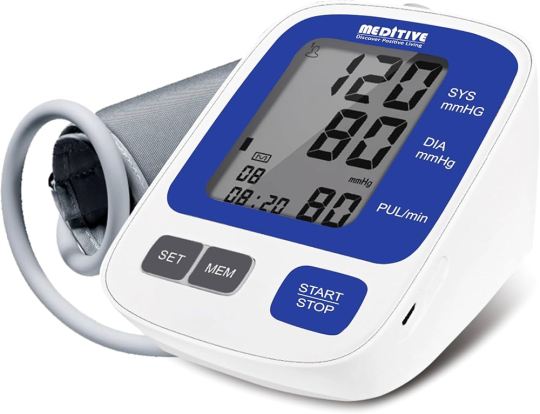
Managing blood pressure is crucial for maintaining good health, particularly for individuals with hypertension or those at risk. With the advancement of technology, blood pressure measurement apps like BPCorrect have become indispensable tools for patients. These apps enable easy and accurate monitoring of blood pressure readings, empowering patients to take control of their health. In this article, we explore how BPCorrect helps patients track and manage their blood pressure effectively.
1. What is BPCorrect and How Does it Work?
BPCorrect is a blood pressure measurement app designed to assist users in monitoring their blood pressure levels. It connects to digital blood pressure cuffs, records readings, and provides users with detailed reports. The app helps track blood pressure changes over time, allowing patients to manage their condition with ease.
Compatibility with Digital Cuffs: BPCorrect pairs with digital BP cuffs that send data directly to the app via Bluetooth.
User-Friendly Interface: The app is designed for simplicity, allowing patients to take accurate measurements at home without requiring specialized knowledge.
Read More 👉 Blood Pressure Apps vs. Regular Monitoring: Which is Better?
2. Key Features of BPCorrect
The BPCorrect app offers several features that make it an effective tool for blood pressure management:
Easy Data Tracking
Automated Record Keeping: Every time a reading is taken, BPCorrect automatically logs the data in the app. This helps patients keep a consistent record of their blood pressure.
Track Changes Over Time: The app provides a timeline of your blood pressure readings, allowing you to monitor trends over days, weeks, or months.
Accurate Readings
Real-Time Measurements: BPCorrect ensures that readings are taken accurately and in real-time. The app uses reliable algorithms to process the data from the cuff, providing precise readings for the user.
Consistency: With BPCorrect, patients can easily take regular measurements, ensuring consistent data for tracking and analysis.
Reports for Healthcare Providers
Shareable Reports: One of the standout features of BPCorrect is its ability to generate detailed blood pressure reports. These reports can be easily shared with healthcare providers, facilitating better communication and more informed treatment decisions.
PDF Export: The app allows users to export their blood pressure data as a PDF, which can be sent directly to doctors or healthcare professionals via email or other platforms.
Read More 👉 How BPCorrect Simplifies Blood Pressure Monitoring for Patients
3. Why BPCorrect is Effective for Blood Pressure Management
Convenience
Monitor at Home: With BPCorrect, patients can track their blood pressure without having to visit a clinic. This is particularly helpful for individuals who have difficulty attending regular doctor visits.
Track Anytime, Anywhere: The app is accessible at any time, allowing patients to check their blood pressure when it’s most convenient for them, even while traveling or at work.
Better Understanding of Blood Pressure
Visual Data Representation: BPCorrect provides visual charts and graphs, which help patients understand their blood pressure trends more clearly. This makes it easier to see how lifestyle changes or medication are affecting their readings.
Actionable Insights: The app also provides insights and recommendations based on the readings, giving patients helpful suggestions for managing their blood pressure more effectively.
Encourages Regular Monitoring
Reminders for Measurements: BPCorrect can send reminders to patients to take their blood pressure regularly. This promotes consistent monitoring, which is essential for managing hypertension or preventing it from worsening.
Personalized Health Goals: The app can be customized to set health goals based on individual needs, further motivating patients to track their progress over time.
Read More 👉 Register (For Clinicians)
4. The Role of BPCorrect in Managing Hypertension
Managing high blood pressure, or hypertension, requires regular monitoring and lifestyle adjustments. BPCorrect plays a vital role in helping patients adhere to their treatment plans by offering tools for tracking progress and sharing data with healthcare providers.
Proactive Management: With BPCorrect, patients can take proactive steps by monitoring their blood pressure frequently, identifying early warning signs of high blood pressure.
Informed Decisions: By having access to real-time data and reports, patients and their healthcare providers can make well-informed decisions about medication and lifestyle changes.
Early Detection: Regular monitoring with BPCorrect allows for the early detection of irregular readings, enabling prompt medical attention and reducing the risk of complications related to high blood pressure.
5. Conclusion
Using a blood pressure measurement app like BPCorrect provides patients with a simple, effective, and convenient way to track and manage their blood pressure. By offering real-time data, detailed reports, and insights into their health, BPCorrect helps patients take control of their blood pressure management. Whether you're managing hypertension or simply trying to maintain a healthy blood pressure, BPCorrect provides the tools necessary to stay on top of your health.
0 notes
Text
Emerging Players and Innovations in the Global Blood Pressure Cuffs Market: A Comprehensive 2024 Market Forecast - UnivDatos
Key Highlights of the Report:
Ø Global burden of hypertension: Growing prevalence of hypertension is the major factor for increasing demand of blood pressure cuffs.
Ø Technological Advancement: Technological innovations such as automated blood pressure monitors are user-friendly, improve accuracy and provide quick responses. This quality of automated blood pressure monitors leads to growing popularity of this device among healthcare providers and patients.
Ø North America's Leadership: North America has exceptionally well-developed healthcare system, which benefitted the market players to bring innovative products to the healthcare providers as well as patients, which is driving growth of this region.
Ø Increase Adoption of Home Blood Pressure Monitors: Growing awareness regarding potential benefits of remote monitoring system is leading to increased adoption of home-based blood pressure monitors for continuous monitoring
Ø Asia-Pacific Growth: Market forces driving the market in the Asia-Pacific region due to government initiatives, policies and programs and growing interest of market players in investing in this region.
According to a new report by UnivDatos Market Insights, the Blood Pressure Cuffs Market was valued at USD 816.08 million in 2023 and is expected to grow at a CAGR of 5.34% during the forecast period (2024-2032). This is mainly due to the desire for rapid growth, more and more companies are participating in collaborative ventures such as mergers and acquisitions as ways to boost their capacities and shares and increase their knowledge of latest technological advancements. The increasing prevalence of hypertension is the major factor contributing to the growing demand for blood pressure cuffs. For instance, according to the World Health Organization (WHO) Global Report on Hypertension, around 1.3 billion adults in the year 2019, were affected by Hypertension. The report states that uncontrolled hypertension can lead to health complications such as stroke, kidney damage, heat attack and several other health problems. It further states that out of 1.3 billion people, only 21% of people got their hypertension controlled. Many companies are seeking major funding from venture capitalist firms to fuel research and development on effective blood pressure monitoring devices that is expected to further enhance blood pressure cuffs market.
Access sample report (including graphs, charts, and figures): https://univdatos.com/get-a-free-sample-form-php/?product_id=67421&utm_source=LinkSJ&utm_medium=Snehal&utm_campaign=Snehal&utm_id=snehal
Technological Advancement
With growing cases of hypertension and shortage of healthcare providers, technological advancements such as automated blood pressure monitoring devices saves a lot of time by giving fast and accurate responses. These are user friendly, reduces human errors and give healthcare providers the provision to monitor several patients in short duration of time. This quality of automated blood pressure monitors leads to growing popularity of this device among healthcare providers and patients. American Heart Association have also recommended use of automated BP machine with appropriate blood pressure cuffs size, to monitor blood pressure regularly at home for keeping track of their own health and encourage self-involvement in the disease management process. Additionally, digital technology advancements such as automated blood pressure monitors, are now widely used in homecare settings. Patients don’t require healthcare provider’s assistance to check their blood pressure and thus minimizes dependency. This gives the users a sense of self-awareness and responsibility towards their own health management and helps to track status of their own health by this continuous monitoring system. These frequent technological advancements are flourishing growth of blood pressure cuffs market.
Click here to view the Report Description & TOC: https://univdatos.com/get-a-free-sample-form-php/?product_id=67421&utm_source=LinkSJ&utm_medium=Snehal&utm_campaign=Snehal&utm_id=snehal
According to the report, the Asia-Pacific region is expected to be the fastest growing region in the forecast period
Asia-Pacific blood pressure cuffs market is the fastest growing region due to various factors such as increasing aging population, increased prevalence of cardiovascular diseases, growing investments within the region and increased awareness regarding potential benefits of remote monitoring. Additionally increased research and development activities and growing investments by key market players are also leading to the robust growth of this market within this region. Growing interest of leading players to invest in this emerging region is further flourishing growth of blood pressure cuffs market in Asia-Pacific. For instance, in June 2023, OMRON Healthcare Inc., which is a world leader in manufacturing blood pressure monitors, announced to establish a manufacturing plant in India to enhance production of blood pressure monitors within the country. This has planned due to increasing demand of blood pressure monitors in India. This investment is expected to bring innovation and development of blood pressure cuffs in Asia-Pacific region.
0 notes
Text

Purchase Blood pressure Monitor Products Online
If you have hypertension or high blood pressure, tracking your condition is crucial. One effective method is using a home blood pressure monitor. These medical supplies are user-friendly and provide accurate readings. SurgiNatal offers a wide range of electronic blood pressure monitor tailored for older adults at affordable prices.
Blood pressure monitors come in two main types: manual and digital. Manual monitors require a healthcare professional to use a cuff and stethoscope to measure blood pressure. Digital monitors, however, are automated, featuring an inflatable cuff and a display screen, making them easier to use without specialized training. Some digital models can store readings and track changes over time.
To ensure accurate measurements, follow these guidelines:
Sit with your arm supported at heart level.
Rest for a few minutes before taking a measurement.
Avoid talking or moving during the measurement.
Take readings at various times of the day.
Regularly calibrate your monitor to maintain accuracy.
Surginatal prioritizes your comfort with our range of blood pressure monitors, including the BP Monitor Automatic, BP11 Backlight, Mercurial Sphygmomanometer Deluxe, and others. Invest in your health with our reliable monitors and manage your blood pressure with ease and confidence.
#blood pressure monitor#medical equipment#online surgical store#surgical supplies#surgical products#BP Monitor
0 notes
Text
Revolutionizing Health Monitoring: The Benefits of Wearable Blood Pressure Monitor
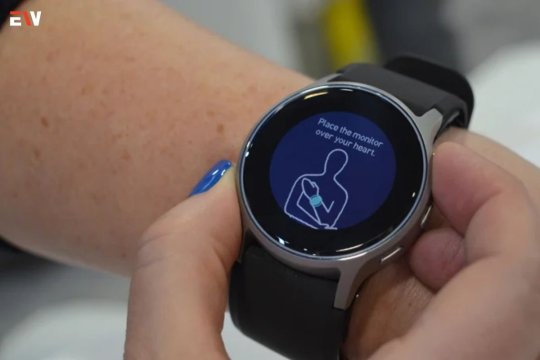
Share Post:
LinkedIn
Twitter
Facebook
Reddit
Source- PCMag
Wearable technology has transformed the way we track our health and fitness, offering convenient and accessible solutions for monitoring vital signs and maintaining overall well-being. Among these innovations, wearable blood pressure monitors stand out as powerful tools for tracking blood pressure levels in real time and empowering individuals to take proactive steps towards better cardiovascular health. In this comprehensive guide, we’ll explore the benefits of wearable BP monitors and how they are revolutionizing health monitoring for people around the world.
Here are 9 Benefits of a Wearable Blood Pressure Monitor
1. Continuous Monitoring
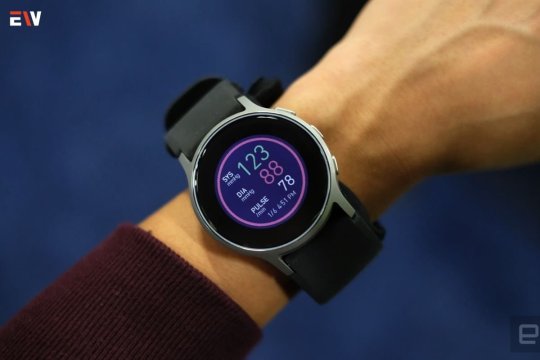
One of the primary benefits of wearable blood pressure monitors is their ability to provide continuous monitoring of blood pressure throughout the day. Unlike traditional blood pressure cuffs, which require periodic measurements, wearable monitors can track blood pressure levels automatically and provide real-time data, giving users a more comprehensive picture of their cardiovascular health over time.
2. Convenience and Accessibility
Wearable BP monitors offer unmatched convenience and accessibility, allowing users to monitor their blood pressure anytime, anywhere, without the need for bulky equipment or frequent visits to healthcare facilities. Whether at home, work or on the go, users can easily wear their monitors discreetly and track their blood pressure levels effortlessly, empowering them to take control of their health with minimal disruption to their daily routines.
3. Improved Compliance
Traditional BP monitoring methods often require users to remember to take measurements at specific times throughout the day, leading to inconsistent monitoring and potential gaps in data. Wearable monitors remove barriers to compliance by automating the monitoring process and providing continuous data collection. With built-in reminders and alerts, users are more likely to adhere to their monitoring regimen, leading to more accurate and reliable results.
4. Early Detection of Hypertension
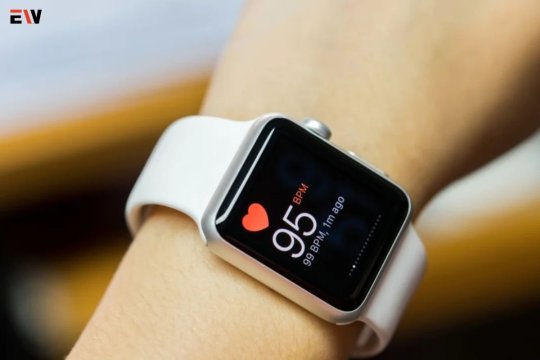
Hypertension, or high blood pressure, is a leading risk factor for cardiovascular disease and other serious health conditions. Wearable blood pressure monitors enable early detection of hypertension by providing timely and actionable insights into blood pressure trends and fluctuations. By identifying abnormal blood pressure patterns early on, users can take proactive measures to manage their condition and reduce their risk of complications.
5. Personalized Insights
Wearable BP monitors offer personalized insights into individual blood pressure patterns and trends, allowing users to track their progress over time and make informed decisions about their health. Advanced monitoring features, such as data analysis algorithms and predictive analytics, can identify correlations between lifestyle factors, such as diet, exercise, stress, sleep, and blood pressure levels, empowering users to make targeted lifestyle modifications for better cardiovascular health.
6. Enhanced Patient Engagement
Wearable blood pressure monitors promote patient engagement and empowerment by involving users in their healthcare journey. By providing access to real-time data and actionable insights, users become more engaged and proactive in managing their blood pressure and overall health. With the ability to track progress, set goals, and receive feedback, users are motivated to adopt healthier behaviors and adhere to treatment plans prescribed by healthcare professionals.
7. Remote Monitoring and Telemedicine
In an era of remote healthcare and telemedicine, wearable blood pressure monitors play a crucial role in enabling remote monitoring of patients‘ cardiovascular health. Healthcare providers can remotely access patients’ blood pressure data in real time, monitor trends and changes, and intervene promptly if necessary. Remote monitoring with wearable blood pressure monitors enhances continuity of care, improves patient outcomes, and reduces the need for in-person visits, particularly for patients with chronic conditions or those living in remote areas.
8. Empowerment for At-Risk Populations
Wearable blood pressure monitors empower at-risk populations, such as individuals with hypertension, diabetes, or cardiovascular disease, to actively manage their health and reduce their risk of complications. By providing personalized feedback and support, wearable monitors enable users to make informed decisions about their lifestyle choices, medication adherence, and treatment plans, leading to better outcomes and improved quality of life.
9. Research and Population Health Insights

Wearable blood pressure monitors hold promise for advancing research and population health initiatives by providing large-scale data on blood pressure patterns and trends across diverse populations. Researchers can analyze aggregated data from wearable monitors to identify risk factors, track disease trends, and develop targeted interventions for improving cardiovascular health on a global scale. Wearable monitoring technology has the potential to revolutionize population health surveillance and inform public health policies and interventions aimed at reducing the burden of cardiovascular disease worldwide.
Conclusion
Wearable blood pressure monitors represent a paradigm shift in health monitoring, offering continuous, convenient, and personalized solutions for tracking blood pressure levels and promoting cardiovascular health. With their ability to provide real-time data, improve compliance, enable early detection of hypertension, and empower users to take proactive control of their health, wearable monitors are revolutionizing the way we monitor and manage cardiovascular health. As technology continues to evolve and innovation accelerates, wearable monitors hold tremendous promise for improving patient outcomes, advancing research, and transforming population health on a global scale.
Also read: The Rise of Wearable Health Tech: Transforming Personal Wellness
0 notes
Text
Blood Pressure Monitoring Devices And Accessories Market Size and Growth Analysis with Trends, Key players & Outlook to 2030
The latest market report published by Credence Research, Inc. “Global Blood Pressure Monitoring Devices And Accessories Market: Growth, Future Prospects, and Competitive Analysis, 2016 – 2028. The global Blood pressure monitoring devices and accessories market has witnessed steady growth in recent years and is expected to continue growing at a CAGR of 6.20% between 2023 and 2030. The market was valued at USD 2.5 Billion in 2022 and is expected to reach USD 3.81Billion in 2030.
Blood pressure monitoring devices and accessories market key growth trends have been witnessing a substantial surge in recent years. With the growing prevalence of cardiovascular diseases and hypertension, there has been an increased demand for accurate and efficient blood pressure monitoring devices. Technological advancements have paved the way for innovative products such as wireless and wearable monitors that provide real-time data to both patients and healthcare professionals. Additionally, the integration of smartphone applications with these devices has further enhanced their usability and convenience.
Growing Usage of Patient Monitoring Technologies and Aging Population Driving Market Growth
The increasing utilization of patient monitoring systems and the rise in the aging population are significant drivers propelling the growth of the global blood pressure monitoring devices and accessories market. As the world's population ages, the incidence of hypertension and other chronic diseases is on the rise, necessitating the need for efficient blood pressure monitoring solutions. Patient monitoring technologies, including remote patient monitoring (RPM), have witnessed significant advancements, allowing healthcare providers to track and manage patients outside of traditional medical settings effectively.
North America: Leading the Market Growth
North America is estimated to dominate the blood pressure monitoring devices and accessories market during the forecast period. The United States, in particular, stands as one of the largest markets for blood pressure monitoring devices and accessories in the region, with a substantial market share. The growth in North America can be attributed to rising investments in the development of precise and efficient BP monitors and increased demand due to the effects of various diseases, leading to a surge in sales.
Browse 210 pages report Blood pressure monitoring devices and accessories Market By Product (Sphygmomanometer/Aneroid BP Monitor, Automated/Digital Blood Pressure Monitor, Arm, Wrist, Finger, Ambulatory Blood Pressure Monitor, Transducers, Disposable, Reusable, Instruments And Accessories, Blood Pressure Cuffs, Others) By End-use (Hospitals, Ambulatory Surgical Centers & Clinics, Homecare) - Growth, Future Prospects & Competitive Analysis, 2016 – 2030)- https://www.credenceresearch.com/report/blood-pressure-monitoring-devices-and-accessories-market
Blood Pressure Monitoring Devices And Accessories Market Major Challenges lie in the ever-evolving healthcare landscape. With an increasing prevalence of lifestyle diseases, such as hypertension and cardiovascular disorders, the demand for accurate and reliable blood pressure monitoring devices has surged. However, there are several hurdles that industry players need to address. Firstly, technological advancements pose a significant challenge as manufacturers strive to develop innovative devices capable of providing accurate measurements while being user-friendly and cost-effective. Secondly, regulatory compliance is a crucial concern given the stringent guidelines governing medical device manufacturing and marketing. Adhering to these regulations requires substantial investments in research and development activities, which can impact market growth.
Key Players and Competitive Landscape
The global blood pressure monitoring devices and accessories market is highly competitive, with several key players vying for market dominance. Some of the major players in the market include Omron Healthcare, Welch Allyn, Inc., A&D Medical Inc., SunTech Medical, Inc., American Diagnostics Corporation, Withings, and Briggs Healthcare. These companies are continuously focusing on product innovation, expanding their distribution channels, and forming partnerships to stay ahead in the market.
Conclusion
In conclusion, the global blood pressure monitoring devices and accessories market is witnessing steady growth, driven by factors like an aging population and increased utilization of patient monitoring technologies. North America stands out as the dominant region for market growth, presenting significant opportunities for businesses. However, challenges such as the shortage of skilled technicians and economic instability need to be addressed. Companies must focus on innovation, expanding market reach, and competitive pricing to maintain their positions in this highly competitive market.
Why to Buy This Report-
The report provides a qualitative as well as quantitative analysis of the global Blood Pressure Monitoring Devices And Accessories Market by segments, current trends, drivers, restraints, opportunities, challenges, and market dynamics with the historical period from 2016-2020, the base year- 2021, and the projection period 2022-2028.
The report includes information on the competitive landscape, such as how the market's top competitors operate at the global, regional, and country levels.
Major nations in each region with their import/export statistics
The global Blood Pressure Monitoring Devices And Accessories Market report also includes the analysis of the market at a global, regional, and country-level along with key market trends, major players analysis, market growth strategies, and key application areas.
Browse Full Report: https://www.credenceresearch.com/report/blood-pressure-monitoring-devices-and-accessories-market
Visit: https://www.credenceresearch.com/
Related Report: https://www.credenceresearch.com/report/contract-research-organization-services-cros-market
Related Report: https://www.credenceresearch.com/report/reusable-period-panties-market
Browse Our Blog: https://www.linkedin.com/pulse/blood-pressure-monitoring-devices-accessories-market-size-singh
Browse Our Blog: https://tealfeed.com/blood-pressure-monitoring-devices-accessories-market-skzfu
About Us -
Credence Research is a viable intelligence and market research platform that provides quantitative B2B research to more than 10,000 clients worldwide and is built on the Give principle. The company is a market research and consulting firm serving governments, non-legislative associations, non-profit organizations, and various organizations worldwide. We help our clients improve their execution in a lasting way and understand their most imperative objectives. For nearly a century, we’ve built a company well-prepared for this task.
Contact Us:
Office No 3 Second Floor, Abhilasha Bhawan, Pinto Park, Gwalior [M.P] 474005 India
0 notes
Text
Three Simple Ways To Keep An Eye On Your Heart Health At Home
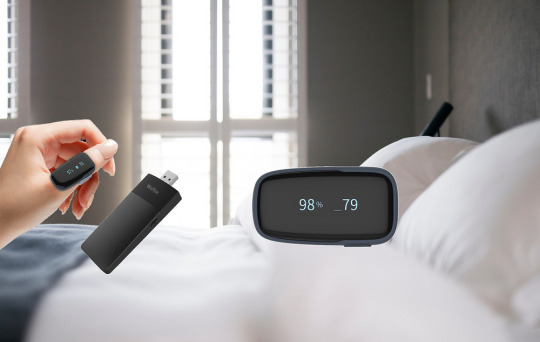
Are you familiar with the term "cardiovascular disease"? They are medical conditions that affect the heart and blood vessels. According to the Global Burden of Diseases report, cardiovascular disease is responsible for about 24.8 percent of fatalities in India. In today's society, physicians advise patients who are prone to or suffering from cardiac issues to use technology to monitor their heart health.
This article discusses three methods for heart monitoring and managing heart health, whether you have a heart condition or not. Let's get started.
Purchase a reliable blood pressure (Bp) monitor.
The pressure of circulating blood against the arteries is measured using a blood pressure cuff. Blood pressure should be 120/80 mmHg, however, this varies with age. Hypertension is caused by blood pressure that is greater than it should be. Hypertension is a condition that affects the elderly and can lead to heart problems, strokes, and renal illness.
Both a manual and an automated instrument can be used to measure blood pressure. Blood pressure monitors are widely accessible in pharmacies and hospitals. Individuals can monitor their blood pressure to evaluate if they are in excellent health for their weight, gender, and age.
According to several studies, consistent blood pressure monitoring at home leads to a reduction in blood pressure. Self-monitoring is a crucial component of cardiac care. It also enables patients to comprehend how their bp is influenced by their food and lifestyle behaviors.
Always have a pulse rate monitor on hand.
Pulse monitors are a wonderful purchase, especially if your doctor advises you to check your vitals on a frequent basis. Pulse monitors count the number of times the heart beats in a minute or the heart rate. A resting pulse rate of 60 to 100 beats per minute is optimum. The resting pulse rate of athletes is generally low.
Both resting and activity heart rates may be measured with pulse monitors. Consult a cardiologist to determine what the appropriate resting and activity pulse rates are for you. Simple bracelets and smartwatches are now available with heart rate monitors. Some smartwatches can also record an EKG along with the wearer's heart rate. A few pulse rate monitors also include alarm systems that sound when the heart rate is abnormally high or low.
Open an app for heart health and exercise.
'Work from home' and 'work out of home' became fashionable after Covid 19 and the lockdowns. Due to limitations, individuals began to rely on home exercises and digital monitoring applications to stay in shape. With a few tweaks, these applications delivered heart monitoring capabilities and heart health suggestions to the user's fingertips.
Heart healthcare apps allow you to save your health data in a secure location and simply share it with a healthcare expert at any time and from anywhere. These apps can also communicate with other remote monitoring apps and equipment to provide doctors with a comprehensive picture of a patient's health.
Conclusion
There are several wearable health monitoring gadgets on the market. For proper recording, choosing anything within one's financial range while considering the quality is critical. It is critical to determine if a gadget is required for heart health monitoring or for general health and fitness.
Finally, raising knowledge about heart health and detecting problems early is always preferable.
4 notes
·
View notes
Text
Prioritizing quality when procuring biomedical equipment for hospitals
In many ways, biomedical equipment and supplies are the central aspects of healthcare facilities. After all, almost all medical diagnoses and treatments are performed with the help of certain equipment and tools. Without the assistance of these items, a hospital will not be able to cater to the needs of its patients appropriately. Hence, all healthcare facilities need to follow a carefully strategized plan to procure the best possible equipment, no matter whether it is Philips VS4 Monitor or something else. This vital signs monitoring device provides automated delivery of vital signs data from bedside monitors to the electronic health record (EHR) of the hospitals, thereby aiding clinicians to chart vitals into the records of the patient at the point-of-care.
Ensure the quality
When planning to procure biomedical equipment for a hospital, one needs to prioritize the aspect of quality. The quality and efficiency of such equipment would impact the health and well-being of the patients, either directly or indirectly. Therefore, one must not make any kind of compromise regarding the quality of biomedical equipment. One of the best ways to maintain this quality standard would be to invest in branded equipment, such as Dinamap ProCare 300 by GE Healthcare. This monitor helps in enhancing productivity with its intuitive menu structure and easy-to-use features. With a properly sized BP cuff in place, one just needs to press a button to take a BP reading. All DINAMAP Procare monitors are upgradeable so they can evolve as per the changing needs.
It is always smarter to buy biomedical equipment and tools manufactured by globally renowned companies like GE Healthcare and Philips to ensure competent delivery of quality care. Premium quality, branded medical equipment has commendable durability and high dependability which facilitates the smooth operation of a healthcare facility.
Selecting the budget for medical equipment
Apart from the quality of medical equipment, the budgetary concerns of the healthcare facility also have to be kept in mind when trying to procure medical equipment. While simpler biomedical supplies like Philips M4841A are fairly affordably priced, cutting-edge patient monitors and MRI machines can prove to be pretty expensive. Hence, hospitals need to carefully assess their budget and also the quote offered by the vendor. One must however note that the cheapest product is not always the right solution in the healthcare industry, as not only it may lead to subsequent expenses towards repairs and maintenance, but sub-par equipment may even affect the patient care process.
0 notes
Text
Pressure Monitoring Market Overview, Merger and Acquisitions , Drivers, Restraints and Industry Forecast By 2027
Increase in prevalence of chronic and acute diseases are responsible for the growing CAGR of the pressure monitoring market. Technological development, increase in purchasing power and general awareness about healthcare is further contributing to the rising CAGR.
The global Pressure Monitoring market was valued at USD 8,384.0 Million in 2020 and is expected to reach USD 13.76 Billion by 2028, at a CAGR 6.3%. To detect the health problems of the patient, pressure monitoring plays an imperative role. Cardiac disorders commonly lead to pressure fluctuations amongst people. High BP is the most common problem amongst such group of population. Factors fueling the growth of the market, include the massive rise in the incidence of blood pressure-related conditions worldwide, active intervention of the governments across emerging economies, rules and regulations in the steady improvement of healthcare infrastructure, and technological advancements in products. Various complications causing chronic and acute diseases such as diabetes, cardiac arrest, and glaucoma are the major fluctuations of pressure in the vital areas of the body. Increase in the prevalence of the above-mentioned diseases and growing aging population have increased the need for pressure monitoring and control in the market.
Get a sample of the report @ https://www.reportsanddata.com/sample-enquiry-form/1494
The report initially offers market introduction, market overview, product scope, market opportunities, growth prospects, risks, limitations, and key drivers. The report also covers a comprehensive analysis of the competitive landscape with extensive profiling of the key competitors. It covers recent technological advancements, product developments, product launches, mergers and acquisitions, collaborations, joint ventures, and partnerships.
Key Companies in the market include:
Philips Healthcare, Welch Allyn, GE Healthcare, NIHON KOHDEN CORPORATION, Drägerwerk AG & Co. KGaA, Medtronic, Becton, Dickinson and Company, Nonin Medical Inc., A&D Medical, Smiths Medical, Icare Finland Oy, Essilor, and NIDEK CO., LTD.,
Regional segmentation comprises of a current and forecast estimation of the market in the key geographical regions such as North America, Europe, Asia Pacific, Latin America, and Middle East & Africa. The report also covers the scope of individual applications and types in each region. The report also covers details about production and consumption patterns, technological developments, revenue growth, market size, market share, key trends and demands influencing market growth in the region, and robust presence of key players in the region.
Market segment analysis:
Type Outlook (Revenue: USD Billion; 2017-2027)
Automated BP Monitors
Ambulatory BP Monitors
Sphygmomanometers
BP Transducers
Digital
Aneroid
Wearable
Blood Pressure Cuffs
Manometers
Valves and Tubing
Bulbs
Oximeters
Capnographs
Spirometers
Flanged Mouth Pieces
Nasal Probes
Filters
Nasal Plugs
Valves
Others
Prisms
Prisms Sterilizers
Tip Covers
Sensors
Others (Battery, USB Cables, Chargers, and Screw Drivers)
Therapeutic Application Outlook (Revenue: USD Billion; 2017-2027)
Respiratory Disorders
Glaucoma
Cardiac Disorders
Neurological Disorders
Dialysis
Other Therapeutic Applications
Request a discount on the report @ https://www.reportsanddata.com/discount-enquiry-form/1494 Regional analysis further covers a country-wise analysis to offer insights into key trends and demands in each major country that might affect the growth of the market in the region.
North America
Europe
Asia Pacific
Latin America
Middle East & Africa
U.S.
Canada
Mexico
Germany
U.K.
Italy
France
BENELUX
Rest of Europe
China
India
Japan
South Korea
Rest of APAC
Brazil
Rest of LATAM
Saudi Arabia
A.E.
South Africa
Rest of MEA
To know more about the report @ https://www.reportsanddata.com/report-detail/pressure-monitoring-market
Key Features of the Global Pressure Monitoring Market Report:
Comprehensive analysis of the key players operating in the market along with their SWOT analysis, their business profiles, business overview, market share, global position, and market value
Identification and analysis of significant trends and factors driving revenue growth of the market
Analysis of the competitive landscape along with strategic mergers, expansions, agreements, partnerships, joint ventures, acquisitions, and product launches
Assessment of each market segment along with their growth trends and market revenue contribution
Study of the key regions to pinpoint growth potential and study opportunities, threats, limitations, and risks
Request a customization of the report @ https://www.reportsanddata.com/request-customization-form/1494
Thank you for reading our report. Customization of this report is available according to the client’s needs. Please get in touch with us to know more about the customization feature and our team will ensure the report is tailored as per your requirements.
Browse more details:
Bioactive Wound Care Market Trends
Blood Culture Tests Market Share
0 notes
Photo
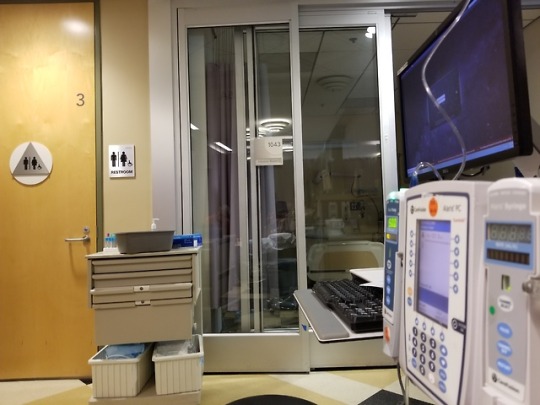
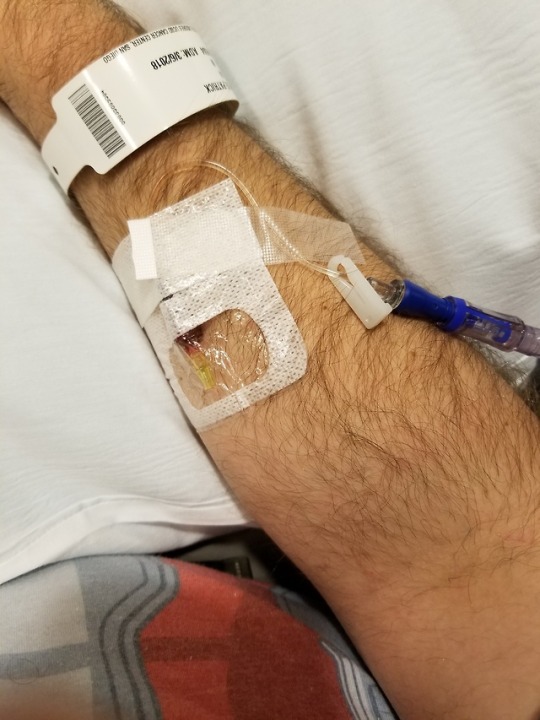


Week 11, Day 77, Infusion 8
So, I wish I’d spent the weekend doing something worthwhile, like fighting cancer. As I’ve mentioned before, I really just sort of stumble and nap through cancer; I’ll leave the “fighting” bit to people who are more capable. Really, I’ve been too exhausted to write lately, combined with the lack of material. I mean, sure, I could go into blow-by-blow discussions of insurance, keeping current on all my meds, and the nuts and bolts of having a pulse whilst surviving an alien parasite in the somatosensory lobe. Which largely involves sleeping.
Bad news, I had to be awake and coherent all day today (and you all know how much I hate that) because the fascist laws governing human medical trials require me to give various amounts of consent at varying stages in the process. I mean, I could’ve tried to sleep in the vomit-green chemo ward barcalounger (and they are comfortable enough to sleep in, if I felt tired enough), but, anytime medical staff are required to be within screaming distance and take regular vitals to make sure my heart isn’t exploding, I have a little trouble falling asleep for that.
Unfortunately, I had to be up at the God-awful hour of 8 am to make it to this week’s chemo (I realize that’s unkind, but they are pumping me full of substances that give me insomnia, so I don’t feel too guilty about admitting that. HOWEVER, that comes into play because I forgot my pre-infusion ritual of drinking many liters of water to help the nursing staff find a vein. Imagine my horror when my veins started doing their old party trick of being easy to find, hard-to-stick (”It was in there, I don’t know what happened,” as one nurse put it)(there are so many moments in this twisted trek when I have to bite my cheeks raw to keep from screaming something crude like, “That’s what she said!”). So, after - let me count the track marks - four attempts, they finally found a good one. I guess my go-to vein is starting to scar. I mean, bad enough that I get the Iggy Pop life expectancy, and tiring life style (it is amazingly exhausting being a drug addict, even under a physician’s direct supervision), now I have to have his track-mark-besmirched venous system. Goddamn, life is not fair.
Speaking of not fair, I didn’t get the awesome, floor-to-ceiling view I got last time (to be honest, seats are given out on a random, first-come, first-serve type basis, so this is not some sort of systemic injustice), so I thought I’d give everyone a look at what to expect in the modern chemo ward. With the added bonus of an idiot in a Captain America shirt.
Speaking of Cap, I’ve jumped a size in the BP cuff since I started these shenanigans, so, even though it makes my muscles feel like Hell, the serum isn’t impeding muscle growth. Hooray. I only bring that up because it’s become something of a recent tradition of nurses sizing me up, then fiddling with the stupid BP cuffs (God help modern medicine if Russia ever found a way to destroy automated BP machines; the medical-industrial complex would come to a grinding halt). Which I only bring up because whilst wrestling an XL BP cuff on, one nurse remarked, “You have really big arms” - my first impulse was to thank her.
Of course, that was a dozen hours ago; the muscle-pain side-effects and fatigue have come roaring back at full speed. My arm and shoulder do not feel well, folks. And, if I should survive the night (which seems likely, but there’s a solid chance this stupid chemo-hangover will kill me first), tomorrow promises to be physically miserable. Still, it beats death or mental disfiguration (which is pretty much what neurological disease does).
1 note
·
View note
Text
A general refresher on DINAMAP PRO 400
Medical equipment is a critical aspect of the healthcare system. While major biomedical equipment like patient monitoring systems is obviously important, so are simpler supplies like Pacific medical cables and sensors. Sensors that are embedded in medical devices are vital for improving patient care and comfort, as well as enhancing the performance of healthcare professionals and reducing healthcare costs. Masimo SPO2 Finger Probes especially provide commendable SpO2 performance while facilitating patient comfort with a connector positioned away from the sensor application site.
The DINAMAP PRO 400 is one medical device that can be seen in multiple types of healthcare environments today. It essentially is a vital signs monitor that provides dependable automated BP, predictive temp, SpO2, and pulse rate with the use of DINAMAP technology. This technology has been clinically-proven as more accurate than many other competitive models. Pulse and BP assessment can be done swiftly and easily with Dinamap Pro 400 Monitor. With the properly-sized BP cuff in place, clinicians just have to press the large gray knob to take a reading.
All DINAMAP monitors are known to use an oscillometric stepped deflation pattern that helps in recognizing and rejecting artifacts. The gold standard DINAMAP algorithm assists in seeking pulses of equal frequency and amplitude and shall only deflate in the situation that a proper reading is obtained. DINAMAP technology also rejects bad data so you can trust the first numbers that appear on the screen.
Hospital administrative staff must give adequate focus to the purchase of both simple supplies like sensors and major equipment like vital signs monitors to be assured of the commendable quality of care at their facility.
0 notes
Text
Blood Pressure Monitoring Devices Market 2019- Global Industry Details by Overview, Size, Top Manufacturers, Trends, Demand, Overview, Forecast to 2025
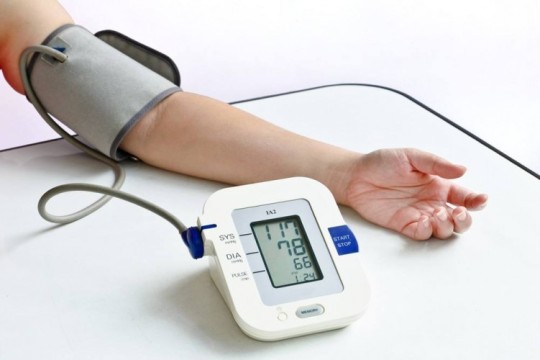
Industry Trend Analysis
The blood pressure monitoring devices market is expected to be around $2.3billion by 2025.Increasing prevalence of heart related disorders and rapidly increasing geriatric population are major factors responsible for the growth of global market. As per the report published by the Center for Disease Control and Prevention (CDC) in November 2016, nearly 75 million adults had high blood pressure in America.Moreover, advancements in technology such as BP monitoring systems based on mobile and new technologies related to automation in blood pressure monitoring will further enhance growth of the market. However, high cost, lack of awareness and low accuracy rate of the devices can impact the growth of market.
Get Free Sample Report: https://www.crystalmarketresearch.com/report-sample/HC0626
Product Outlook and Trend Analysis
Sphygmomanometer segment accounted for the major share of the global market in 2016. This major share is attributed to factorssuch as its digitalization, extensive applications and related benefits.Digital sphygmomanometer segment is anticipated to witness a robust growth during the forecast period due to factors such asease of use, low costand high accuracy.
Regional Outlook and Trend Analysis
North America accounted for the major share of the overall market in 2014. This major share can be attributed to factors such as increase in patient awareness regarding blood pressure monitoring products, increasing prevalence of hypertension and advanced healthcare facilities.Asia-Pacific is expected to grow at a rapid pace throughout the forecast period due to factors such asincreasing patient awareness towards preventive healthcare, rising prevalence of hypertension andpresence of unmet medical needs in the region.
Competitive Analysis
Product innovation and development is a key strategy followed by the major players in blood pressure monitoring devices market. For instance, in January 2014, GE Healthcare unveiled its new blood pressure cuff for the forearm called GE Critikon Radial-Cuf which addresses the issue of inaccurate reading for people with upper arm circumference of more than 40 centimeters. Some of the key players in the global blood pressure monitoring devices market are Withings SA, Philips Healthcare, GE Healthcare, Welch AllynInc., A&D Medical Inc., Spacelabs Healthcare Inc., SunTech Medical, Inc., American Diagnostics Corporation, Briggs Healthcare,GF Health Products, Inc.
Market Opportunities
Technological advancements such as mobile based blood pressure monitoring systems and increasing demand for personalized and portable monitoring systems are the key opportunities that the competing players will focus on over the next few years. With rising geriatric population susceptible to high blood pressure and growing awareness about preventive healthcare worldwide, the market has tremendous growth opportunities over the forecast period.
Get Discount For This Report: https://www.crystalmarketresearch.com/check-discount/HC0626
Blood Pressure Monitoring Devices Market Segmentation
By Product:
Sphygmomanometers
o Digital Sphygmomanometers
o Aneroid Sphygmomanometers
o Mercury Sphygmomanometers
Ambulatory Blood Pressure Monitors
Automatic Blood Pressure Monitors
Blood Pressure Transducers
Blood Pressure Instrument Accessories
o Blood Pressure Cuffs
§ Disposable
§ Reusable
o Bladders, Bulbs andValves
By Region:
· North America
o U.S
o Canada
o Mexico
· Europe
o Germany
o France
o UK
o Italy
o Spain
o Rest of Europe
· Asia-Pacific
o Japan
o China
o Australia
o India
o South Korea
o Rest of Asia Pacific
· Rest of the World
o Brazil
o South Africa
o Saudi Arabia
o United Arab Emirates
o Others
Enquiry Before Buying This Report: https://www.crystalmarketresearch.com/send-an-enquiry/HC0626
About Crystal Market Research: Crystal offers one stop solution for market research, business intelligence, and consulting services to help clients make more informed decisions. It provides both syndicated as well as customized research studies for its customers spread across the globe. The company offers market intelligence reports across a broad range of industries including healthcare, chemicals & materials, technology, automotive, and energy.
Contact Us: Judy S 304 South Jones Blvd, Suite 1896, Las Vegas NV 89107, United States Toll Free: +1-888-213-4282 Email: [email protected]
0 notes
Text
10 Steps to Accurate Manual Blood Pressure Measurement
Working for a company that develops blood pressure monitoring devices and technologies, I deal with blood pressure on some level every day. We make accurate and reliable blood pressure measurement our business...literally. So, it only makes sense that we should care about accurate blood pressure measurement from a fundamental perspective, which is the inspiration for my first blog post.
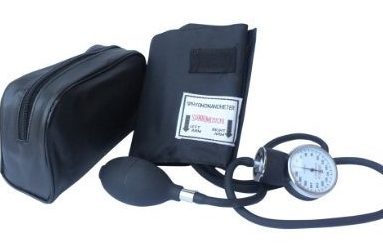
As most readers probably know, the typical method for blood pressure measurement has long been the manual auscultatory technique with a mercury column or mechanical aneroid sphygmomanometer. However, with the benefits that automated BP devices provide with a repeatable standardized technique and removal of observer bias, there has been a shift towards automated devices in clinical practice. As the American Heart Association (AHA) states in their most recent recommendations for blood pressure measurement, "there is a role for (automated) devices in office use, both as a substitute for traditional (manual) readings and as supplements to them." * However, the AHA goes on to recommend that a properly maintained monitor for manual measurement of blood pressure be available for routine office measurement.
Another observation the AHA makes is that although the auscultatory method has been the standard for blood pressure measurement for over 50 years, surveys indicate that physicians rarely follow the well published guidelines for their use. * This is where we feel it is important to remind all healthcare professionals of best practices related to manual blood pressure measurement, so without further ado...
Step 1 - Choose the right equipment: What you will need: 1. A quality stethoscope 2. An appropriately sized blood pressure cuff 3. A blood pressure measurement instrument such as an aneroid or mercury column sphygmomanometer or an automated device with a manual inflate mode.
Step 2 - Prepare the patient: Make sure the patient is relaxed by allowing 5 minutes to relax before the first reading. The patient should sit upright with their upper arm positioned so it is level with their heart and feet flat on the floor. Remove excess clothing that might interfere with the BP cuff or constrict blood flow in the arm. Be sure you and the patient refrain from talking during the reading.
Step 3 - Choose the proper BP cuff size: Most measurement errors occur by not taking the time to choose the proper cuff size. Wrap the cuff around the patient's arm and use the INDEX line to determine if the patient's arm circumference falls within the RANGE area. Otherwise, choose the appropriate smaller or larger cuff.
Step 4 - Place the BP cuff on the patient's arm: Palpate/locate the brachial artery and position the BP cuff so that the ARTERY marker points to the brachial artery. Wrap the BP cuff snugly around the arm.
Step 5 - Position the stethoscope: On the same arm that you placed the BP cuff, palpate the arm at the antecubical fossa (crease of the arm) to locate the strongest pulse sounds and place the bell of the stethoscope over the brachial artery at this location.
Step 6 - Inflate the BP cuff: Begin pumping the cuff bulb as you listen to the pulse sounds. When the BP cuff has inflated enough to stop blood flow you should hear no sounds through the stethoscope. The gauge should read 30 to 40 mmHg above the person's normal BP reading. If this value is unknown you can inflate the cuff to 160 - 180 mmHg. (If pulse sounds are heard right away, inflate to a higher pressure.)
Step 7 - Slowly Deflate the BP cuff: Begin deflation. The AHA recommends that the pressure should fall at 2 - 3 mmHg per second, anything faster may likely result in an inaccurate measurement. *
Step 8 - Listen for the Systolic Reading: The first occurence of rhythmic sounds heard as blood begins to flow through the artery is the patient's systolic pressure. This may resemble a tapping noise at first.
Step 9 - Listen for the Diastolic Reading: Continue to listen as the BP cuff pressure drops and the sounds fade. Note the gauge reading when the rhythmic sounds stop. This will be the diastolic reading.
Step 10 - Double Check for Accuracy: The AHA recommends taking a reading with both arms and averaging the readings. To check the pressure again for accuracy wait about five minutes between readings. Typically, blood pressure is higher in the mornings and lower in the evenings. If the blood pressure reading is a concern or masked or white coat hypertension is suspected, a 24 hour blood pressure study may be required to assess the patient's overall blood pressure profile.
youtube
0 notes